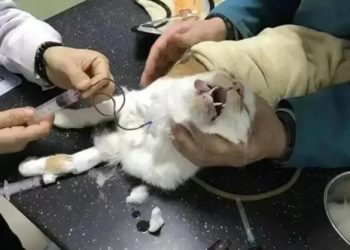Obesity in dogs is one of the fastest growing health problems in dogs today, according to the Association for Pet Position Prevention, the number of obese pets in the United States is increasing rapidly, with 60% of cats and 56% of registered cats of dogs are obese.
Like humans, obese pets face various health problems. Weight loss and daily maintenance are the keys to preventing these health problems. So, owners should learn how to manage their dog’s weight. If your dog is obese, you should actively develop a weight loss plan for them, and prevent weight gain in the first place.
Causes of obesity in dogs
There are many causes of obesity in dogs, the most common culprits being poor diet and lack of adequate exercise. Dogs recovering from illness or injury often need to remain sedentary and are therefore at risk of weight gain. Among them, weight gain may also be a symptom of some hormonal disorders, such as hypothyroidism or Cushing’s syndrome. Finally, genetics is also a big factor. Certain dog breeds are more prone to obesity than others, such as Karelian bear dogs, English bulldogs, beagles, pugs and cocker spaniels to name a few.
diet
Diseases caused by obesity in dogs
Obesity in dogs is very dangerous and can cause or aggravate the following diseases: heart disease, diabetes, high blood pressure, orthopedic injuries (such as cruciate ligament rupture or patellar luxation), osteoarthritis, respiratory diseases, various cancers, etc.
How to tell if your dog is overweight
Owners can assess their dog’s weight at home. Here are some easy ways to do it:
1. Touch the dog’s chest with your hand. If you can feel the ribs, it proves that the dog is not overweight. On the contrary, the dog is too fat. Not feeling the ribs is a sign that your dog is overweight.
2. Looking at the dog from the side, you should normally see upward folds on the abdomen, and an overweight dog will have little or no folds.
How to Control Your Dog’s Weight
If your dog needs to lose weight, or you want to maintain his healthy weight, it’s best to work with your veterinarian to develop a weight management plan. The plan mainly consists of an organized diet and exercise program. In addition, the veterinarian will help the dog set goals and schedule a quick check-up to monitor the dog’s progress.
It is important to weigh your dog regularly, preferably every one or two weeks. Many veterinary clinics have a scale in the lobby, which is generally free to use. For most dogs, a traditional diet and exercise program does the trick. However, some dogs have a little difficulty losing weight for specific health reasons. So be sure to consult your veterinarian before starting a weight loss program for your dog.
sports
Controlling a dog’s diet isn’t a dog’s willpower problem, it’s an owner’s problem. The owner may need to use his own willpower to resist the dog’s begging gaze. Remember, food is not love, and if you want to reward or treat your dog, there are other options.
Feeding your dog a pile of food scraps and human “junk food” will definitely make your dog gain weight, as will high-calorie dog food and treats. In some cases, a veterinarian will prescribe an over-the-counter special diet. Of course, many commercial diets may work.
When a dog is obese, it needs more exercise than usual to lose weight. If you have an exercise program, increase the frequency and difficulty of the program as much as possible. The most important thing is to commit to a plan and stick to it, the dog will listen to you.
Most dogs want to interact with their owners, especially in the form of exercise, but also in the form of play. Some canine exercises, such as agility training, can be very effective in helping dogs lose weight. In addition to weight loss, canine exercise can also help dogs learn new skills.
Owners should remember that it takes a long time for dogs to lose weight just like humans, and they must be patient~




















